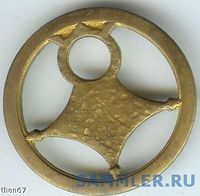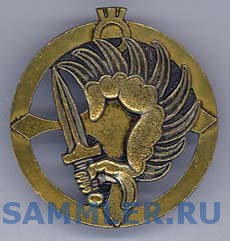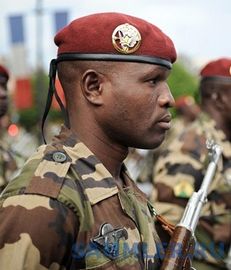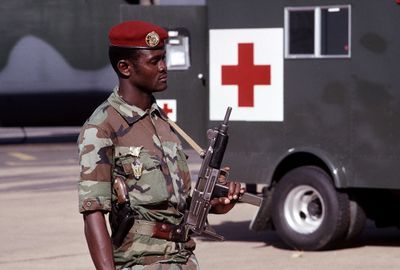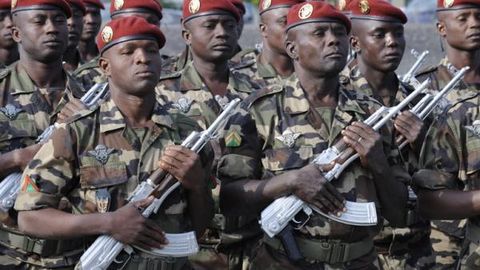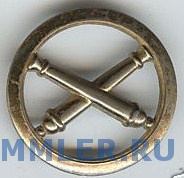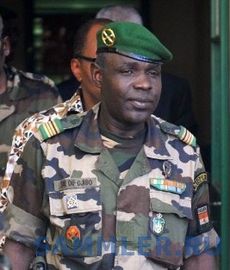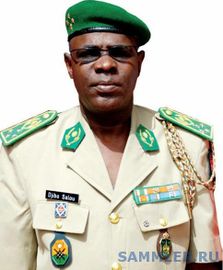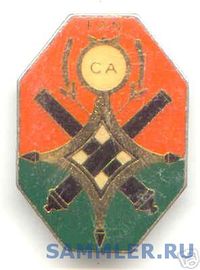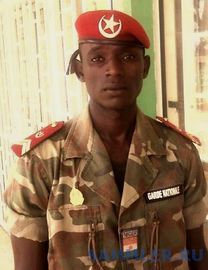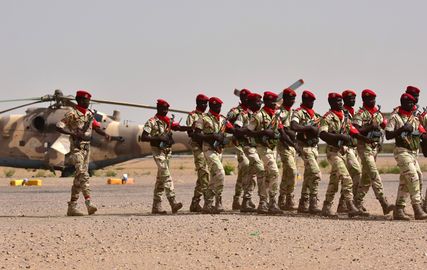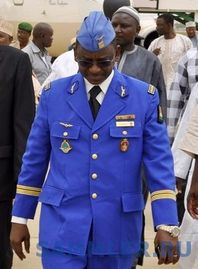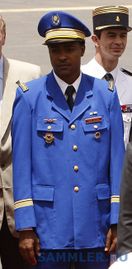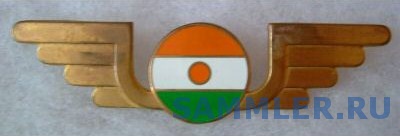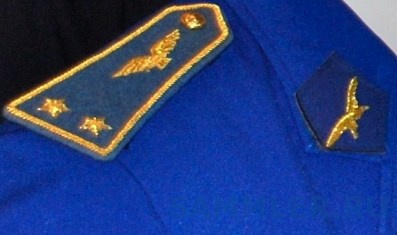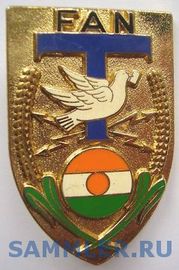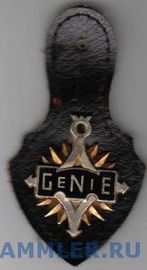Вооружённые силы Нигера
Материал из ВикиВоины
Вооружённые силы Нигера или FAN (сокр. от Forces Armées Nigeriennes) — совокупность войск республики Нигер, предназначенная для защиты свободы, независимости и территориальной целостности государства.
История[править]
Niger, a former French colony, attained independence in 1960. At the time its government was headed by Hamani Diori, who, as President of the RepubUc, remained in power until 1974 when he was overthrown by a military coup. The main reasons for this were stresses created by the Sahel drought and dissatisfaction with the slow rate of national development, occasioned, according to some arguments, by excessive French profits from Niger's one economic asset, uranium, together with the general French dominance of the administration and the economy. Ethnic factors (the exclusion of Hausa— Fulani, Tuareg and Kanuri from effective power in the ruling party, largely Jerma and Sanghai dominated) may also have played a part. Further factors were corruption in the suite of the President, a project of Diori's to use the army for agricultural work and create a 'party militia' to reinforce his own position, and an unpopular defence pact with Libya. The death of President Pompidou in France gave the military conspirators a belief that France would not oppose the coup. Diori's long rule had earlier seen a mihtary mutiny and insurrection in 1963 and an assassination attempt in 1965. The new government took the form of an eleven-member Supreme Military Council, presided over by Lieutenant-Colonel S. Kountche. An attempt by the Vice-President of the Council, Major Sani, to replace Kountche by himself in July, 1975 was foiled, and Sani was imprisoned. A further attempt to overthrow Kountche, headed by a Hausa army major and alleging Jerma domination of the army and government, took place early in 1976 and was equally unsuccessful. Libyan support for this attempted coup appears almost certain.
Internal security and defence against any external threat are the army's two roles; internal security has had implications affecting the army itself, as already noted. Niger had no border problems with its seven neighbours and the army has not been deployed to meet any perceived threat since independence. In 1974 army units distributed food and transported people from areas of extreme drought with noteworthy efficiency.
Организация[править]
The country is divided into three military districts. West (Niamey), North (Agades) and East (Zinder). The army is deployed into five company sized infantry detachments (at Niamey, Agades, Zinder, N'Guigmi and Tahoua) and an armoured squadron, a parachute company and an engineer company (all at Niamey) . A sixth company is to be raised for Dirbon. The gendarmerie's headquarters is at Niamey with four regional groups for Niamey, Maradi, Zinder and Agades. Further regional groups for Tahoua, Diffa and Dosso are proposed. The Repubhcan Guard operates 'pelotons nomades' based on Agades, Tasker, Tchin— Tabaraden and Bilma.
Набор[править]
Men are liable for call-up for years; the system appears to be somewhat random. French training assistance has been provided since 1960; in 1974 the French training personnel numbered 12 officers and 60NCOs. These were aD ordered out by the new miUtary government but this demand may well have been only a gesture. West German assistance was provided for the engineer unit.
Вооружение[править]
Niger's equipment is mainly French, and the infantry weaponry, including 81mm mortars, is entirely so. Some of the armoured cars of the reconnaissance squadron are American M-8 vehicles, others are Panhard. Their state of serviceabihty is very doubtful. Transport is British, German and French. The air force includes a few medium transports and smaller personnel and liaison machines.
Униформа[править]
Униформа вооружённых сил Нигера следует французскому образцу, за исключением кепи, которые заменены фуражками и беретами. Эмблемой вооруженных сил Нигера служит изображение солнечного диска в венке из листьев и початков кукурузы. Эту эмблему военнослужащие армии и жандармерии носят на фуражках, петлицах и погонах.
В отличие от соседей по региону — Мали и Кот-д'Ивуара — у которых эмблемы на фуражках и беретах унифицированы, в армии Нигера эмблемы на беретах носят по основным родам войск или специальным частям. Например, парашютисты Нигера носят традиционные краповые береты с эмблемой, которая представляет собой смесь национальной и французской символики: крылатая рука с мечом является общеизвестным символом французских парашютистов, а агадесский крест или, как его еще называют, крест туарегов, на фоне которого расположена французская эмблема, знаменует собой ВС Нигера. Крест туарегов или агадесский крест представляет собой ромбовидную звезду с вогнутыми сторонами и 4 лучами. Верхний луч звезды переходит в плоское кольцо, а три других луча увенчаны конусообразными наконечниками. В свое время этот символ использовался французской колониальной администрацией, а в настоящее время используется в армии Нигера как элемент символики, а также как эмблема пехоты. Некоторые эмблемы, в частности, артиллеристов (две скрещенные пушки), возможно, были произведены в Израиле, поскольку имеют очень похожий дизайн.
Помимо этого, принадлежность к роду войск или службе обозначается эмблемами, которые носят на нагрудном кармане.
Повседневная форма для армии Нигера имеет песочный цвет и дополняется зеленым беретом, который является стандартным головным убором для всех военнослужащих армии Нигера, за исключением парашютистов.
Личный состав Национальной гвардии Нигера носит красные береты и погоны с эмблемой НГ — звездой и полумесяцем. Нашивка с национальным флагом обычно носится на левом рукаве формы.
Военнослужащие ВВС имеют светло-синюю выходную форму, которую они носят как с фуражкой, так и с пилоткой.
Галерея[править]
Парашютист Нигера, вооруженный Uzi, 1988 г.
Салу Джибо в чине майора в полевой форме с артиллерийской эмблемой на берете.


